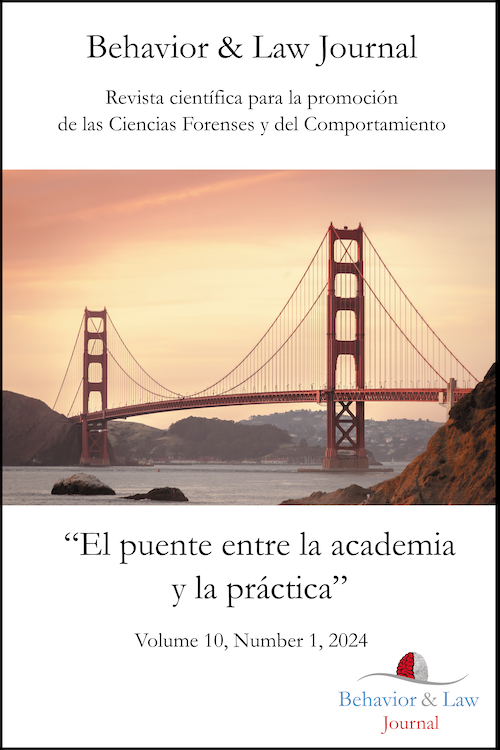Resumen
La Psicología Testimonial explora cómo los factores de memoria, veracidad y persuasión influyen en el testimonio dentro del contexto judicial. Un testimonio, que se define como un documento que certifica la verdad de un suceso, está afectado por dos aspectos principales: la racionalización de los hechos y la subjetividad. Contrario a la visión tradicional que considera la memoria como un archivo exacto de los eventos, la psicología cognitiva demuestra que la memoria es un proceso interpretativo. Este entendimiento desafía la noción de que la memoria es una reproducción fiel de los hechos, reconociendo en cambio que los recuerdos son reconstruidos activamente a través de interpretaciones subjetivas. La persuasión juega un papel crucial en la presentación de testimonios y en la interpretación de los mensajes durante el proceso legal. La capacidad de persuadir a otros sobre la veracidad de un testimonio puede influir significativamente en las decisiones judiciales. Por lo tanto, tanto la memoria como la veracidad y la persuasión son aspectos que los profesionales de la justicia deben tener en cuenta para evaluar.
Citas
Bartlett, F. C. (1932). Remembering: A Study in Experimental and Social Psychology.: Cambridge University Press.
Bruner, J. S. (1957). Going Beyond the Information Given: The Role of Discovery in Learning. Journal of Educational Psychology, 48(5), 243-250. https://doi.org/10.1037/h0046856.
Chaiken, S., & Eagly, A. H. (1993). Sociocultural Factors in the Persuasion Process. Handbook of Social Psychology,, 237-312.
Chino, F. S., & Zegarra-Valdivia, J. (2017). Desarrollo de la capacidad de mentir en la infancia. Revista de Psicología Infantil, 14(1), 89-104.
Clark, D. M., & Wells, A. . (1995). A cognitive model of social phobia. In M. R. Heimberg, C. M. Liebowitz, D. H. Hope, & F. R. Schneier (Eds.), Social Phobia: Diagnosis, Assessment, and Treatment . Guilford Press., pp.69-93.
Collingwood, R. G. (1946). (1946). The Idea of History.
Collingwood, R. G. (1946). The Idea of History. . Oxford: Oxford University Press.
Craik & Lockhart, 1972; Manzanero. (2010). evels of processing: A framework for memory research. . Journal of Verbal Learning and Verbal Behavior, 11, 671-684.
Creswell, J. W. . (2013). Qualitative inquiry and research design: Choosing among five approaches . SAGE Publications., 3rd ed.(3rd ed.), 3rd ed.
Creswell, J. W. (2013). Qualitative inquiry and research design: Choosing among five approaches. SAGE Publications.
Dewey, J. . (1916). Democracy and education: An introduction to the philosophy of education. . Macmillan.: Macmillan.
Gacek, J., & Coenen, R. (2022). Teoría de Gacek – Coenen; Memoria Episódica y Testimonio Presencial. . Archivos de Criminología, Seguridad Privada y Criminalística, , 2(1), 1-19.
Green, M. (1995). The "Reality-Virtual" Projection: A Framework for Understanding Perceptual Processes. The "Reality-Virtual" , 1995.
Hermann Ebbinghaus. (1885). "Über das Gedächtnis" (en español: "Sobre la Memoria"). Translated by H.A. Ruger & C.E. Bussenius. New York: Teachers College, Columbia University.: El Efecto de la Demora en la Memoria .
Hume, D. (2000). Tratado de la naturaleza humana. Ediciones Akal.
Konorski, J., & Miller, R. R. . (1930). Conditioned Reflexes and Neuronal Models. Journal of Psychology, https://doi.org/10.1037/h0070870, 11, 4-18. .
Loftus, E. F. . (1974). The Stability of Witnesses' Memories of Events. Journal of Personality and Social Psychology,, 29(6), 913-920. https://doi.org/10.1037/h0037116.
Loftus, E.F., Miller, D.G., & Burns, H.J. . (1978). Semantic integration of verbal information into a visual memory. . Journal of Experimental Psychology: Human Learning and Memory, 4,19-31.
Madon, S., Guyll, M., Scherr, K. C., Greathouse, S. M., & Wells, G. L. . (2012). The role of confirmation bias in the interrogation room: A review of the literature. . Psychological Science in the Public Interest,, 43-68 https://doi.org/10.1177/1529100612451674.
Masip, J. . (2005). ¿Se pilla antes a un mentiroso que a un cojo? sabiduría popular frente a conocimiento científico sobre la detección no-verbal del engaño. Papeles del Psicólogo, 26(92), 78-91.
Porter, S.,y Brinke, L. . (2010). The truth about lies: What works in detecting high-stakes deception? . Legal and Criminological Psychology, 15, 57–75.
Real Academia Española. (2023). Real Academia Española. Obtenido de Real Academia Española: https://dle.rae.es/testimonial
Reswell, J. W. . (2013). Qualitative inquiry and research design: Choosing among five approaches . (3rd ed.). : SAGE Publications.
Strauss, A. L., & Corbin, J. M. . (1998). Basics of Qualitative Research: Grounded Theory Procedures and Techniques. SAGE Publications., 78-67.
Thompson-Cannino, J., Shapiro, C., & Hirst, W. (2009). The role of memory and social context in the development and maintenance of false memories. Psychological Science, , 52-56.
Tice, D. M., & Baumeister, R. F. . (1997). ongitudinal Study of Self-Esteem and Emotional Experience. . LJournal of Personality and Social Psychology, 50.
Tirapu-Ustárroz, J., López-Rojas, F., & López-Bonilla, J. M. . (2007). La mentira en el contexto judicial: Un análisis de las capacidades cognitivas necesarias. Revista de Psicología Jurídica,, 25(3), 227-242.
Vilalta, C., & Winberg, M. (2016). Interviewing Techniques to Detect Deception. Journal of Investigative Psychology and Offender Profiling, 13(4), 270-284.
Vrij, A., Mann, S., & Fisher, R. P. . (2011). Detecting Deception in Forensic Contexts. Legal and Criminological Psychology, 16(2), 263-274.

Esta obra está bajo una licencia internacional Creative Commons Atribución-NoComercial-SinDerivadas 4.0.
Derechos de autor 2024 Behavior & Law Journal
